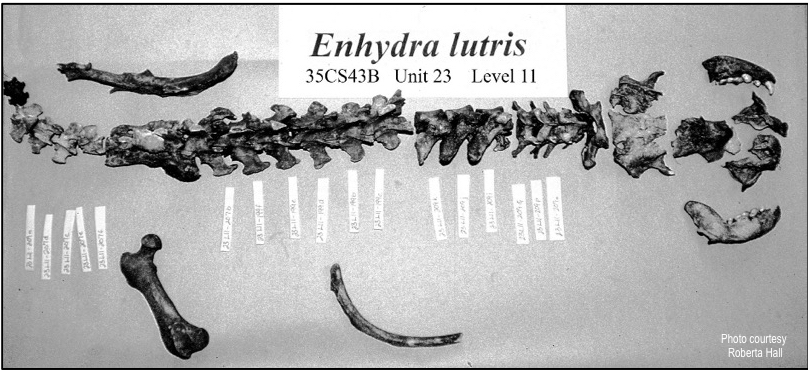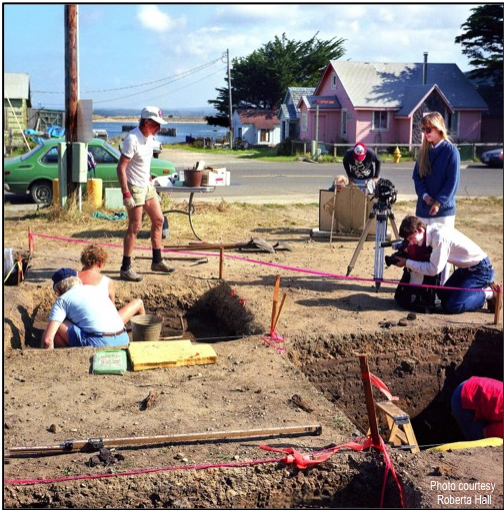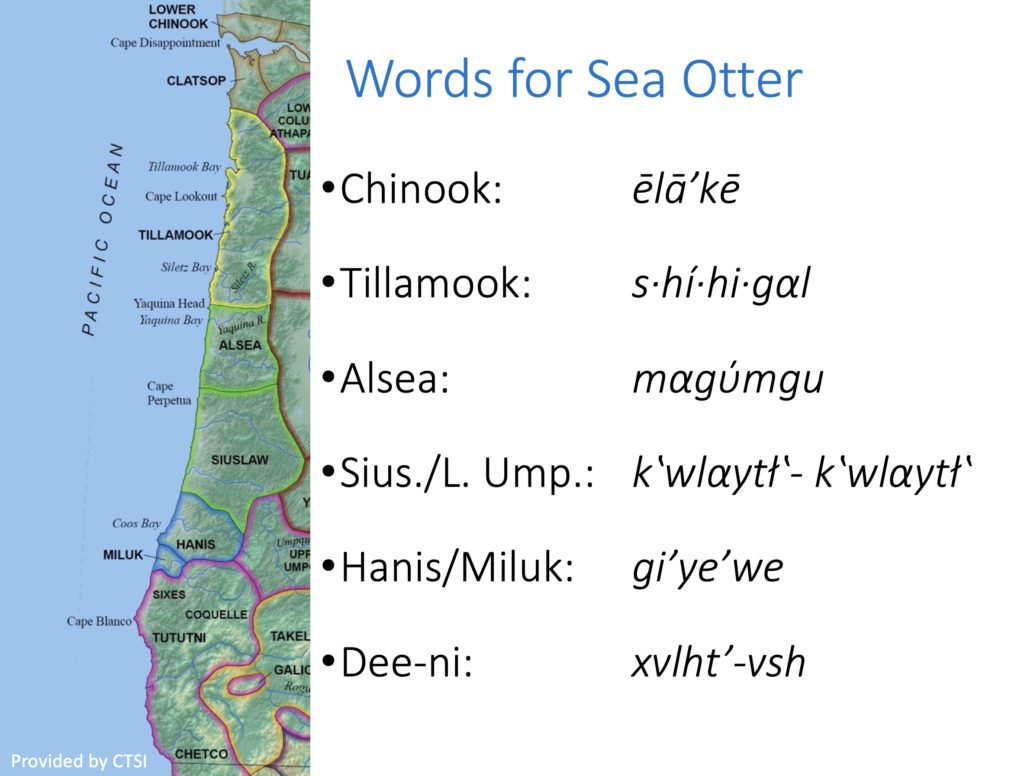
Sea Otters and Oregon Coast Tribes
Coexistence
Sea otters (Enhydra lutris) were once an integral part of the marine ecosystem along Oregon’s coast.
They were part of a larger connected population of sea otters spanning a vast nearshore environment from Baja California, Mexico to Hokkaido Island, Japan. Sea otters were likely present when Oregon’s shoreline was farther to the west, during low sea levels due to the last ice age.
Given their strong association today with the presence of kelp forests, sea otters were likely a key to the “Kelp Highway”. This dependable, food rich ecosystem may have facilitated the migration of early people southward from the Bering Strait along the Pacific coast. As sea level rose as a result of melting continental ice sheets, the Pacific coastline, and sea otters, moved landward to the configuration seen today.
For at least 10,000 years, sea otters were an important part of the culture of the people along Oregon’s coast.
Sea otter bones are commonly found in middens (layers of discarded animal bone, shells, and other artifacts from ancient human occupation) along the coast alongside the remains of fish, shellfish, seals, sea lions, birds, and other animals. The prominence of sea otter bones in these middens shows the importance of sea otters in the life of early native people, as well as the health of the ecosystem sea otters once inhabited.


Elders from throughout the coast attest to the special role of sea otter pelts, and robes made from them, as a precious item conferring wealth and status on the wearer. A headman might don his fine otter robe to awe onlookers, or offer one as a rich gift when conducting diplomacy. A young man looking to obtain his future inlaws’ consent to allow a marriage might offer a payment of otter furs.
In many traditional narratives, otter skins are the rare prize that come to protagonists who are enterprising, powerful, or lucky. On some parts of the coast, traditional narratives also inform us about the way sea otters were to be viewed as respected kin – inextricably linked to the natural cycles that brought people food and prosperity.

Because Oregon’s sea otter population declined so quickly, 19th and 20th century elders’ recollections of sea otter hunting are sparse, but correlate closely with places we would expect otters to return to based on contemporary habitat modeling.
The traditional names for Otter Rock in Lincoln County and Otter Point in Curry County both translate to “sea otters’ rock” in Tillamook and Dee-ni, respectively, suggesting that these places were frequented by sea otters since well before those places were named in English. Although sea otter hunting almost certainly took place as long as humans and otters coexisted in Oregon, no evidence suggests it exceeded sustainable levels until the onset of the international maritime fur trade fur trade.
Read more about the maritime fur trade.
Read our tribal board members’ perspective on our efforts.

